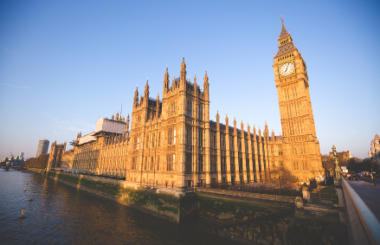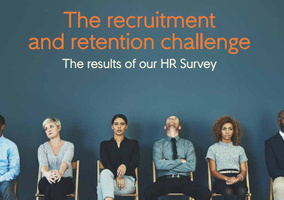While the charity sector is often described as being at a crossroads, or a crisis point, as we approach the inevitable general election the situation seems to be profoundly dire. Sarah Vibert, CEO of NCVO, paints the general picture. “We see charities responding in different ways. For some, it’s a case of ‘it’s raining now, so let’s spend our reserves’. Others already did that during the pandemic. They are having to close services, or make the criteria to access them stricter. There are less resources to go round. And even though this won’t come through in our Civil Society Almanac data for a couple of years, anecdotally, from calls we are getting to our helpdesk, there are far more closures.”
She says that while this mainly affects small charities, there will be rounds of redundancies in the bigger ones as well. “One chief executive recently commented to me about their income being down. I asked which bit and they said every single stream. I’m really worried where this is going.”
She points out that the Civil Society Almanac figures of 2020-21 showed public giving was down in a context of already diminishing government income. “We are really focused on this because we can request tangible government action on public sector contracts. If you go back a few years, two out of five public service delivery charities were subsidising contracts. Our very latest figures show this is now 87%. In some ways, this is a hidden tax and charities can no longer do the additional stuff. They are having to shrink away from it to offer a safety net that should be provided by the state. But we can’t do our jobs if the government doesn’t do its job.”
In terms of engagement with a likely incoming Labour government, Catherine Johnstone, CEO of Royal Voluntary Service, says: “If the sector had met with Keir Starmer 10 years ago, we would have been asking for money. But it isn’t money that is going to fix the challenges society as a whole faces currently. The only way we can enable charities to fulfil their complementary role to the state is to fix the state. At times of crisis, the sector steps up to fill the gap in state services, and the prolonged nature and series of crisis means the sector has leaned in and now cannot reset until the state regains some equilibrium. This means it’s ultimately very difficult to do the wraparound, prevention, postvention, keeping people well, because there is no extra money. Our NHS and social care are struggling to recover from the pandemic and we have large parts of the population on waiting lists for treatment, and without these prevention and support services, many will not be well enough to have the treatment or surgery by the time it’s offered. There is a vicious spiral when there is market failure in the state where there doesn’t appear to be a coherent rescue plan at present. It’s becoming clear that the challenges being faced by our health and social care services is number one in the concerns of the public and therefore it’s where politicians should focus.”
Jane Ide, CEO of Acevo, concurs that this is about fundamental change being needed in society. “About a year ago, we were aware from the charity leaders we work with that it was a sector of two halves. Some were really struggling and then there was a whole swathe who were basically OK. I don’t think that is true now. I’m hearing the same problems, which are centred around funding, from all organisations. There is a really concerning sense that the fundamentals aren’t as steady as they used to be. This is partly finance, but there is also a post-pandemic effect. We have leaders who have tried to implement the changes needed including redundancies, cost cutting and restructuring. They are vastly experienced and have done these things before. But they are saying: ‘I thought I knew how to do this, but I hadn’t taken into account where people are right now.’ The process of dealing with this environment is even harder than in the ‘good old-fashioned’ type of recessions. This worries me as great leaders are stepping away.”
Gerald Oppenheim, chief executive of the Fundraising Regulator, advises that when you have a new government, you have to take the opportunity early, “before they get sucked into the machinery of everyday governing in intimidating circumstances”. He also reminds us not to forget the role of trustees. “The pressures on them are huge, they carry a lot of responsibility. One of the things that has to be done is energising those people carrying out the difficult stuff around change management, who are dealing with staff under pressure and fearing redundancy. Trustees need to support those who have to sign off on that – the CEOs and senior teams – otherwise leaders will drift away.”
It need not be all doom and gloom, argues Danny Sriskandarajah, the recently installed chief executive at the New Economics Forum. “There are upsides but they are likely to be uneven, and to make the most of them we need bold, decisive leadership. I have recently come out of a large operational charity [Oxfam] which earns its money broadly in three ways – public donations, government funding and earned income from shops. There is a challenge for any charity relying on government funding, which had been the source of growth for many charities over the last 20 years – the bigger end of the sector got massive through government contracting – but is now dwindling, becoming more conditional and doesn’t pay full costs. Therefore, it is unlikely to be sustainable. We need that bold, decisive leadership from the sector and government to reset the relationship between us.”
He says that on the donor side, Oxfam has recently had much better returns than it feared it might, largely because it changed its proposition from a traditional humanitarian ask to being much more about activation and converting people who took part in campaigns into supporters – the model traditionally used by the likes of Greenpeace and Amnesty.
Sriskandarajah sees opportunities for charities that can earn money. “Covid-19 was really rough for those of us with shops. But post-Covid-19, there has been record income. Second-hand is zeitgeisty. This is why any upside will be uneven. If you are lucky enough to have invested in entrepreneurial activity, that is hitting a market moment, you have access to growing unrestricted income, which is precious gold dust.”
Compact solutions
Rosamund McCarthy Etherington, partner at law firm Stone King, raises the possibility of a renewed Compact, which is an agreement that sets out the shared principles and guidelines for effective partnership working between central government and the third sector in England, as it was referred to when it was established during the first Blair government. She recalls in 1997 that there were lots of recommendations around. “Some of those ideas may come back. But the problem with the Compact and regulating charities’ relationship with the state, is that all of the collaboration and cooperation is on one side. Therefore, charities are expected to deliver more and more as local authorities struggle. Although, there was merit in its emphasis on charities being a critical friend of government.”
Stephen Ravenscroft, partner at Stone King, adds that while the Compact was rightly about partnership, the fragmented nature of the state means that that sense of partnership does not now exist. “Funder and service provider aren’t in an equal situation.”
Vibert recalls that one of her initial roles in the sector was working on the Compact. “It was written through the lens of a Labour government believing that charities are an extension of the state and public services, but that isn’t helpful and is partly why we are in such a mess now. There is room for a framework that sets out these respective roles but it can’t be from the angle of charities providing public services, but about why charity services are special and the knowledge that charities can bring. We need a much more sophisticated conversation.”
Ide identifies an opportunity and a need for a framework that rebalances this relationship. “Maybe the next government will realise that this isn’t just about commissioning, and is the only way we are going to be able to get the country and communities back in a better place – as there won’t be money to throw at it, like there was in 1997. Magic can come from good collaborative relationships.”
Johnstone reflects on her time as CEO of Capacitybuilders, which started in 2006. “We had a government that was really engaged and wanted to fund the sector properly, even if the sector wasn’t always very receptive to what we were doing, as accounting rules around the way the money was allocated made it hard to give out. Those accounting rules haven’t changed, so if you really want to reset the relationship between charities and government they need to. As well as a lack of consistency between UK countries, we need to change the rules so that civil servants can make more sensible, agile decisions. Capacitybuilders could have worked but the rules of engagement weren’t right.”
Speaking out
McCarthy Etherington moves onto the need for a framework protecting the right of charities to speak out. “Labour says it welcomes that critical friend, which is admittedly easy to say in opposition. Things like anti-advocacy clauses can have a chilling effect.”
She suggests that this is all part of the so-called culture wars. “We see MPs using data access requests to find out what charities say about them, so it becomes a politicised environment. The Charity Commission is referencing respect and tolerance as a legal duty to underpin reputation. But having a strong voice can be more reputationally enhancing.”
Sriskandarajah has two observations, drawing on previous experience. “When I was secretary general at Civicus, we looked at civic freedoms around the world. In recent years, Britain has fallen from the top to the third category. The myth that we are the exemplar of a democratic society, and that freedoms of assembly, association and expression are protected, no longer holds.” He cites comments by prime minister Rishi Sunak on mob rule, made on the morning that this discussion took place, as an example.
From his Oxfam experience, he states that charity is no longer enough. “Systemic change requires speaking out on systemic injustice. This presents a conundrum for those of us who want to make change in a political environment where speaking out is hard.”
Johnstone thinks there is power and influence in coalitions. “It comes back to finding organisations with similar issues and challenges. A collective voice is much harder to ignore, so we have to be smart and a bit more agile.”
As far as the charity sector is concerned, there are legal constraints on what organisations can say and do, and Ide is happy with that. But she likens them to the boundaries of a garden. “We have every right to use every last inch of our garden. But what happens when there is a nervousness about the consequences of speaking out is a risk that your neighbour will move the hedge, which restricts the size of the garden. This will get even more febrile pre-election. And it’s so hard to speak out if you think your trustees won’t back you.”
She continues: “As infrastructure bodies, we have a role. We can speak out and take the flak on behalf of individual organisations. It’s our job to enable people to understand what they can do. And we can talk in a way individual charities can’t. Ultimately, you can’t deliver your mission if you aren’t delivering positive change.”
Vibert suggests that the government’s Community Organisations Cost of Living Fund would not have happened without the infrastructure bodies joining together. “We were able to ask whether government wanted to take on our collective numbers or do something to stop people starving. Government couldn’t ignore that. But for smaller charities with risk-averse boards, it’s difficult.” She also points out that the RSPCA has changed around 400 laws throughout its history. “It didn’t do that without getting angry.” But she warns that the shrinking of civic space has become normalised to an extent.
Ravenscroft sees a real problem with “anti-embarrassment clauses”. “The whole point of being a refugee charity, for example, is speaking on behalf of refugees. It feels like the relationship with government is broken. The sense from government is of seeing it as a service-driven relationship without recognising the added benefits charities bring, so they end up doing the basics and don’t feel they can speak out. It feels very short-sighted.”
Fundraising
Oppenheim says that the financial pressures are substantial for all sizes of charity. “There is huge competition among the donor pool. Corporates are under their own pressures. We are aware that there are now more organisations fundraising who aren’t charities, and so aren’t subject to the same rules, either from charity law or in the Fundraising Code. One of my challenges is the disproportionate amount of time these non-charities take up. It’s mostly community interest companies, which are largely private benefit bodies with a bit of public benefit thrown in. When they are fundraising outside stations, for example, it makes it more challenging for those charities also there who are obeying the rules.”
He thinks that certain bits of law that charities have to follow need a fresh look. “If you go back to the 1992 act, and the bits around commercial participators and professional fundraisers, the world has moved on over 30 years.”
Oppenheim raises recent revelations in the Times about Great Ormond Street Hospital Charity (GOSH): “This illustrates the challenges that charities face to fundraise effectively and at scale. To have the resource to oversee contractors is very difficult to do when you are running multifaceted fundraising campaigns.”
He says the regulator is trying to formulate helpful guidance. “Things will be exacerbated during election campaigns, be they local, mayoral or general. A lot of charities at the top end have a reliance on door-to-door. It’s a model that works even if it’s widely disliked. There is already a very difficult balance to strike, and those fundraisers will also be in competition with candidates and canvassers. So, what helpful things can we and the Charity Commission say? There is nothing illegal about fundraising during a campaign, even if some people believe there is. So, we want to frame guidance that is positive but has the necessary advice on managing contracts and the people fundraising on your behalf, while wearing your charity t-shirt.”
In response, McCarthy Etherington wonders how charities can be expected to manage every single doorstep interaction, especially when journalists are monitoring them.
They cannot, admits Oppenheim, and ponders that there are shades of 2015 and Olive Cooke in the GOSH story. Ravenscroft observes that the financial pressures charities face might be leading to that.
Oppenheim points out that the pandemic means a lot of people have moved on, so a lot of learning and knowledge from 2015 has gone. He also says: “One of the success stories out of 2015 was that charities got their act together over data, spurred on also by GDPR. There is no systemic problem currently with charity misuse over donor data.”
Vibert says that trust in charities is now as high as it was before those “bad days”. She adds: “We have got to hold onto that and have some optimism. People still really trust charities.”
Volunteering
Johnstone asserts a more cautiously optimistic angle in terms of volunteering: “Collaboration has become easier and more valued. We saw great examples of volunteering growing during the pandemic, with 12.4 million people stepping forward to support the pandemic in their community in 10 months.”
She explains: “When people have a really tough time, they want to be empowered to do something. This happened in the pandemic with new volunteers from new communities. And then the Big Help Out was created to test whether it was a pandemic thing. Some 7.2 million people came out on a bank holiday Monday to ‘have a go’ in their community, proving that there is a lot of appetite for ordinary people to be active within their community and play their part. A lot of these volunteers have continued with their volunteering, particularly where it’s easy to access, uses technology and is rewarding. The landscape has changed and we need to ensure that we offer people multiple ways to be active so that they develop their volunteering journey in a way that suits them. We want to make sure that everyone who wants to can access the joy gained from volunteering.”
Mergers
During the discussion, there was a lot of reference to collaboration, but what about merger? Once again, there is a lot of talk about financial pressures leading to more mergers, but are they in reality takeovers, with a financial risk, at a time when charities have no headspace to consider merger strategically?
Vibert is not a great advocate for mergers; she feels organisations can lose something of themselves. She says that as CEO of an organisation that has merged/taken over many other organisations in recent years. “I believe in collaboration as it’s the best of both. One of my jobs is to help charities achieve systemic change through working together.”
Ravenscroft says that two plus two does not always equal five, let alone four, sometimes it is only three. “Equally, some mergers have to happen as two struggling organisations may not be able to survive at all unless they come together. But that often happens too late, due to financial expediency, and so ends up reducing choice and lessening diversity.”
It is tempting to think that a lack of mergers is down to ego and a reluctance on the part of trustees, says Sriskandarajah. “But often, when a board and leadership get interested in the idea of serious integration, it’s too late and a failing charity needs to be taken over by another. I would argue we should be looking for deduplication and specialisation before crisis strikes. In international development, for example, part of the problem is that every agency wants to operate everywhere and do loads of things. A more optimal model would be to specialise but this is really difficult, as donor and supporters want you to be everywhere. Arguably, collaboration might make it less clear exactly where we can add value.”
Thanks to Stone King for its support with this article












